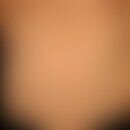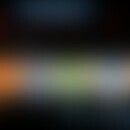Synonym(s)
HistoryThis section has been translated automatically.
Davies 1968; Allen 1971; Tay 1971; Price 1980 (naming).
DefinitionThis section has been translated automatically.
Group autosomal recessive inherited condition with defect in the DNA excision repair system and the essential features of brittle, easily broken, sulfur-deficient hair in a complex combination of variable neuro-ectodermal changes.
Several acronyms are used to describe the clinical manifestations of TTD (see classification below).
You might also be interested in
ClassificationThis section has been translated automatically.
Subgroup A: simple trichthiodystrophy.
Subgroup B: Sabinas syndrome (OMIM 211390- named after the Mexican city of Sabinas: short brittle hair, brittle nails, simple trichhiodystrophy, mental developmental disorders)
Subgroup C: Pollitt syndrome (OMIM 275550- named after Pollitt, the first describer: symptoms as in B + folliculitis, kareis, slowed bone development).
Subgroup D: BIDS syndrome (OMIM 234050- brittel hair and nails, developmental delay, short stature, short brittle hair, brittle nails, developmental delay, short stature.
Subgroup E: IBIDS syndrome (OMIM 242170 - brittel hair and nails, developmental delay, short stature, short brittle hair, brittle nails, scaly erythema, progeria, microencephaly, ataxia, lenticular opacities, calcified foci in the brain.
Subgroup E: PIBIDS syndrome (OMIM 278730 - brittel hair and nails, developmental delay, short stature, short brittle hair, brittle nails, scaly erythema, progeria, microencephaly, ataxia, lenticular opacities, calcified foci in the brain + photosensitivity.
Occurrence/EpidemiologyThis section has been translated automatically.
EtiopathogenesisThis section has been translated automatically.
TTD can be clinically divided into several types.
To date, several genes have been associated with the pathogenesis of TTD:
- XPB gene
- XPD (mutated in photosensitive TTD) and
- TTDN1 (mutated in non-photosensitive TTD).
- ERCC2 gene (excision repair cross-complementing rodent repair deficiency, complementation group 2). This mutation leads to defects in the DNA excision repair system (Lund EB et al. 2019).
It results in decreased sulfur content of the hair.
Scanning electron microscopy reveals an absence of cuticle. Longitudinal fractures of the hair shaft are evident.
The significance of the sulfur deficiency for the neurological disorders is not clear. There are relationships to xeroderma pigmentosum.
XPB and XPD are genes that also play a role in xeroderma pigmentosum, but unlike xeroderma pigmentosum, TTD is not associated with an increased risk of skin cancer. Clinically, TTD presents with different manifestations, including cutaneous, neurological, and growth abnormalities.
ClinicThis section has been translated automatically.
Short brittle hair, trichorrhexis nodosa. Occasionally nail atrophy, koilonychia; congenital ichthyosis, increased photosensitivity, mental retardation, various congenital neuroectodermal disorders, short stature, cataract. The hair shows polarization optically with a succession of dark and light bands (zebra pattern) a typical feature. Increased photosensitivity is not found in all variants of the syndrome. When present, it is associated with disorders of DNA repair (sometimes with xeroderma pigmentosum-likeskin changes).
Differential diagnosisThis section has been translated automatically.
TherapyThis section has been translated automatically.
Progression/forecastThis section has been translated automatically.
Patients almost always die early. The average life span is about 10 years.
LiteratureThis section has been translated automatically.
- Allen RJ (1971) Neurocutaneous syndromes in children. Postgrad Med J 50: 83-89
- Baden HP, Jackson CE, Weiss L et al (1976) The physicochemical properties of hair in the BIDS syndrome. Am J Hum Genet 28: 514-521.
- Berneburg M, Krutmann J (2003) Xeroderma pigmentosum and related syndromes. Dermatologist 54: 33-40
- Broughton BC et al (2001) Two individuals with features of both xeroderma pigmentosum and trichothiodystrophy highlight the complexity of the clinical outcomes of mutations in the XPD gene. Hum Mol Genet 10: 2539-2547
- Liang C et al (2005) Characterization of tiger tail banding and hair shaft abnormalities in trichothiodystrophy. J Am Acad Dermatol 52: 224-232
- Lund EB et al (2019) Novel ERCC2 mutation in two siblings with trichothiodystrophy.
- Pediatr Dermatol 36:668-671.
- Mondello C et al (1994) Molecular analysis of the XP-D gene in Italian families with patients affected by trichothiodystrophy and xeroderma pigmentosum group D. Mutat Res 314: 159-165
- Price VH, Odom RB, Ward WH, Jones FT (1980) Trichothiodystrophy. Sulfur-deficient brittle hair as a marker for a neuroectodermal symptom complex. Arch Derm 116: 1375-1384
- Rebora A (1987) PIBI(D)S syndrome-trichothiodystrophy with xeroderma pigmentosa (group D) mutation. J Am Acad Dermatol 16: 940-947.
- Rebora A, Crovato F (1987) PIBI(D)S syndrome-trichothiodystrophy with xeroderma pigmentosum (group D) mutation. J Am Acad Dermatol 16: 940-947.
- Richetta A et al (2001) What's new in trichothiodystrophy. J Eur Acad Dermatol Venereol 15: 1-4.
- Sass JO et al (2004) Trichothiodystrophy: quantification of cysteine in human hair and nails by application of sodium azide-dependent oxidation to cysteic acid. Arch Dermatol Res 296: 188-191
- Sperling LC et al (2003) "Curly" wood and tiger tails: an explanation for light and dark banding with polarization in trichothiodystrophy. Arch Dermatol 139: 1189-1192
- Tay CH (1971) Ichthyosiform erythroderma, hair shaft abnormalities, and mental and growth retardation. A new recessive disorder. Arch Dermatol 104: 4-13
- Toelle SP et al (2001) Trichothiodystrophy with severe cardiac and neurological involvement in two sisters. Eur J Pediatr 160: 728-731
Incoming links (11)
Bids syndrome; ERCC2 Gene; Hereditary koilonychia; Marinescu-sjögren syndrome ii; Marinescu-sjörgren syndrome; Pibids syndrome; Pollit syndrome; Pollitt's syndrome; Sabina's brittle hair syndrome; Sabinas syndrome; ... Show allOutgoing links (5)
ERCC2 Gene; Koilonychie; Photodermatoses (overview); Trichorrhexis nodosa; Xeroderma pigmentosum;Disclaimer
Please ask your physician for a reliable diagnosis. This website is only meant as a reference.




